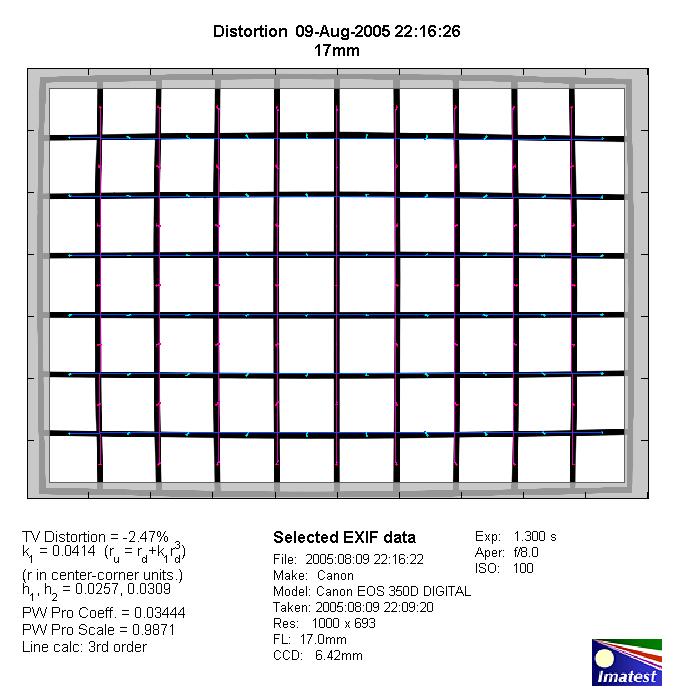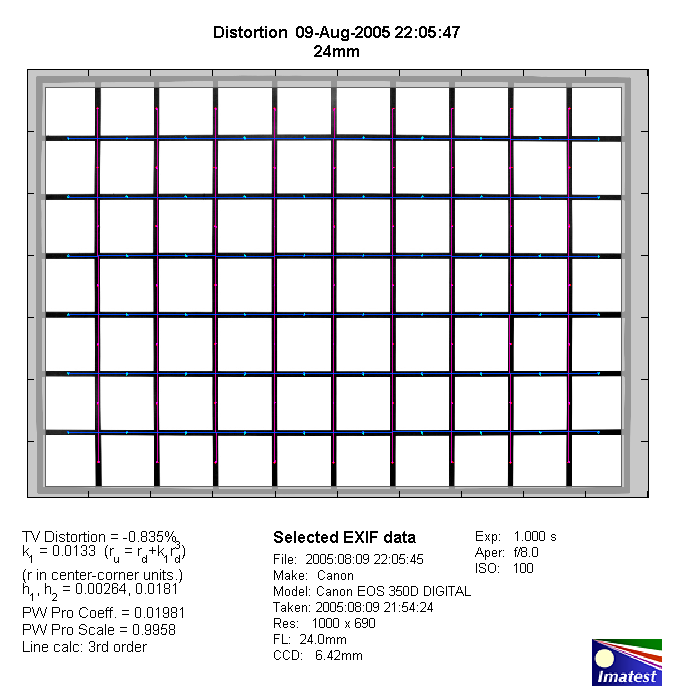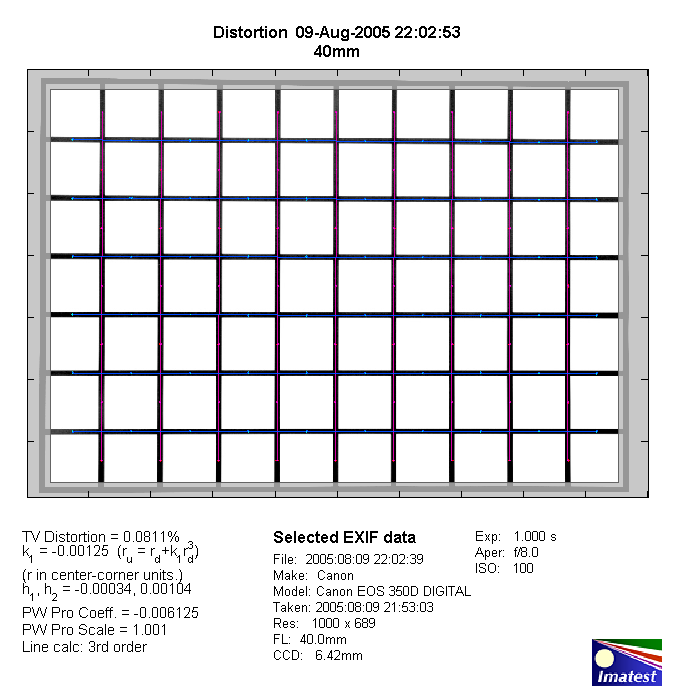|
Canon EF 17-40mm f/4 USM L - Review / Test Report - Analysis |
|
Lens Reviews -
Canon EOS (APS-C)
|
|
Page 2 of 3

Distortion
At 17mm the lens exhibits quite strong barrel distortion (~2.5%). At 24mm there is very
slight barrel distortion whereas at 40mm the problem is negligible.
17mm:

24mm:

40mm:

The chart above has a real-world size of about 120x80cm. Possibly expect more distortions towards closer focus distances.
Vignetting
APS-C DSLRs such as the EOS 350D can take advantage of the sweet spot of full format lenses so vignetting
is no big issue with the 17-40mm f/4L here. Surprisingly vignetting is slightly more pronounced at the long
end with may be an effect originating in the sensor characteristics.

MTF (resolution)
The EF 17-40mm f/4 L showed an excellent performance in the lab. It's quite safe to assume that the peak performance
in the center exceeded the resolution limits of the 8 megapixel sensor of the EOS 350D. The borders are very good
though stopping down a little helps to lift up the resolution almost to center quality. It is worth to mention
that the extreme borders did not fall apart like e.g. with the Sigma AF 18-50mm f/2.8 EX - that's a plus when using
a full frame lens on a DSLR with reduced image circle. The performance peaks around f/8. Thereafter diffraction
effects introduce a negative effect (unavoidable).
Please note that the MTF results are not directly comparable across the different systems!
Below is a simplified summary of the formal findings. The chart shows line widths per picture height (LW/PH) which can be taken as a measure for sharpness.
If you want to know more about the MTF50 figures you may check out the corresponding Imatest Explanations
I should mention that I've used the lens (another sample) during my film SLR days and at the extreme borders the
results were somewhat disappointing below 20mm (full format).
Chromatic Aberrations (CAs)
Chromatic aberrations (color shadows at harsh contrast transitions) are fairly well controlled for a lens in this class. The problem is somewhat more pronounced at f/4 but stopping down to f/5.6 or beyond reduces the lateral CAs to a low degree.

|